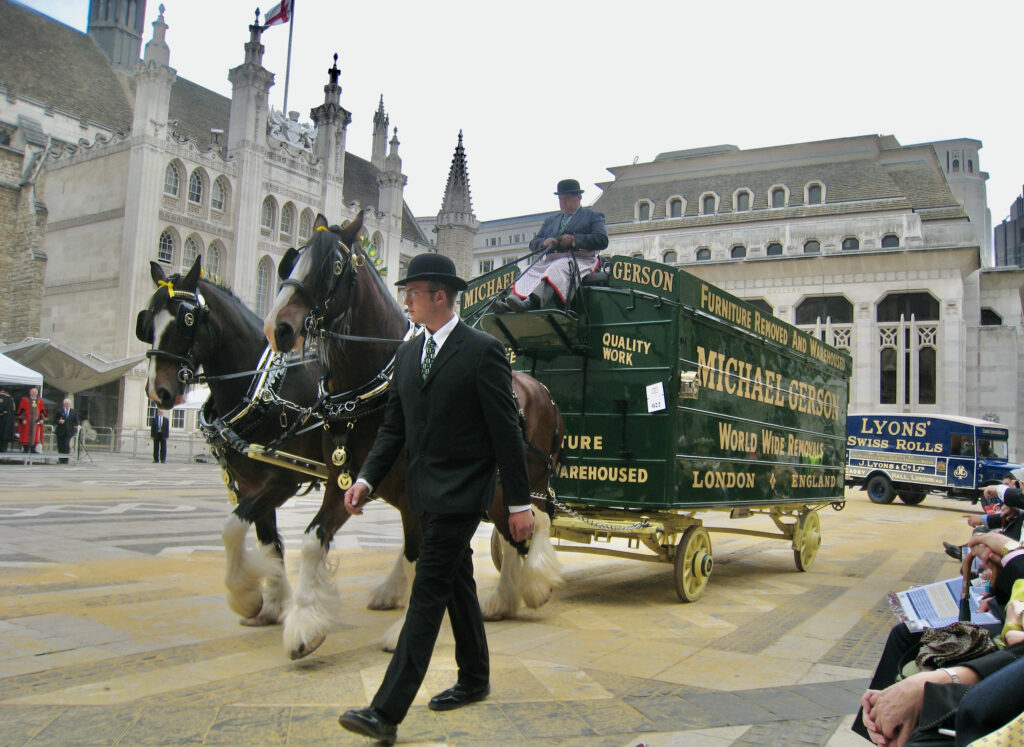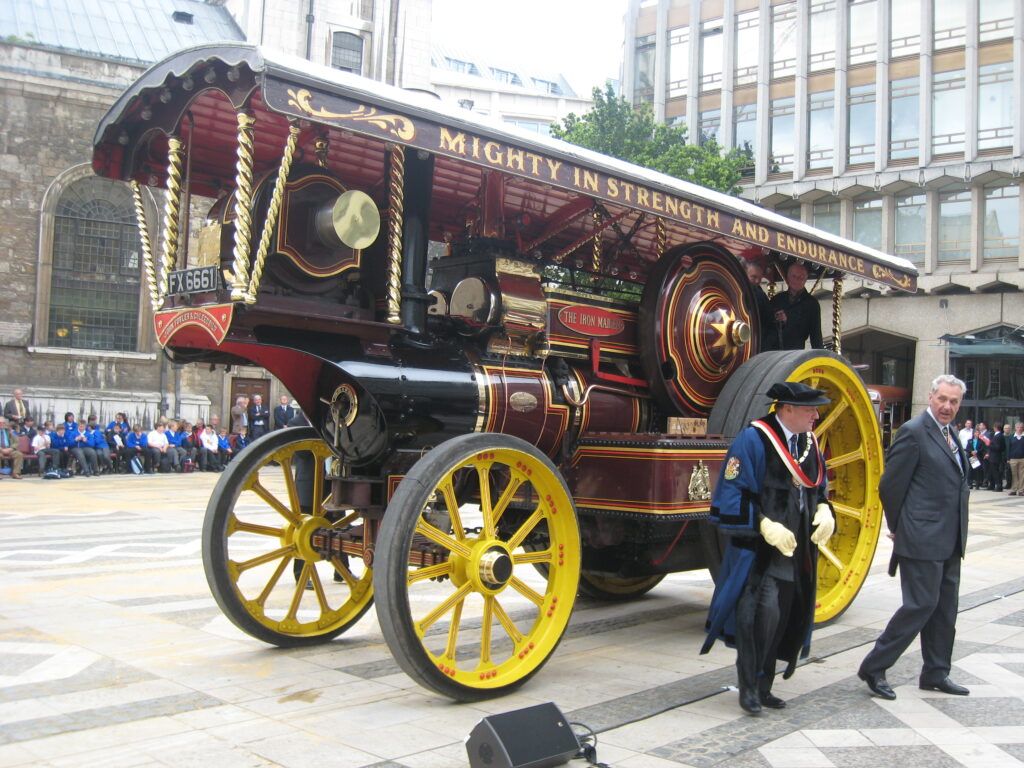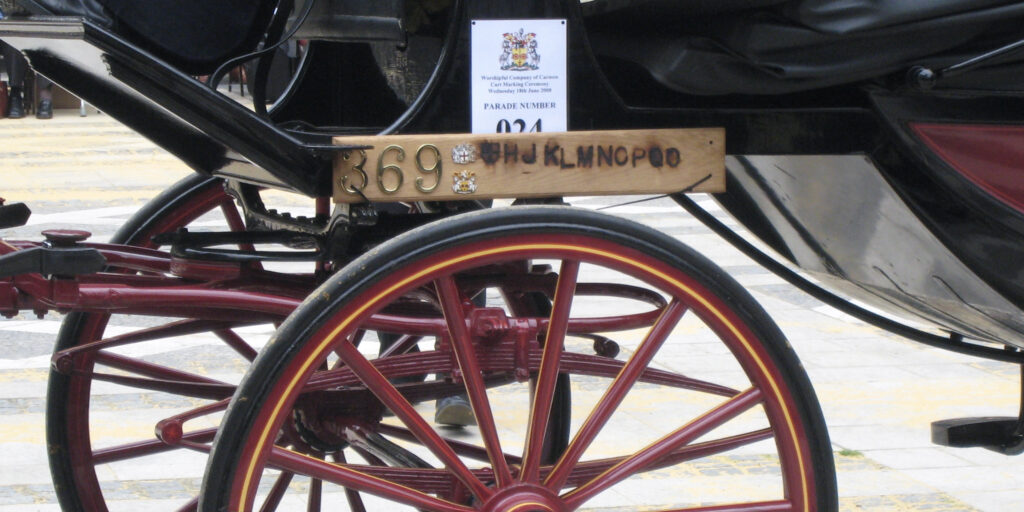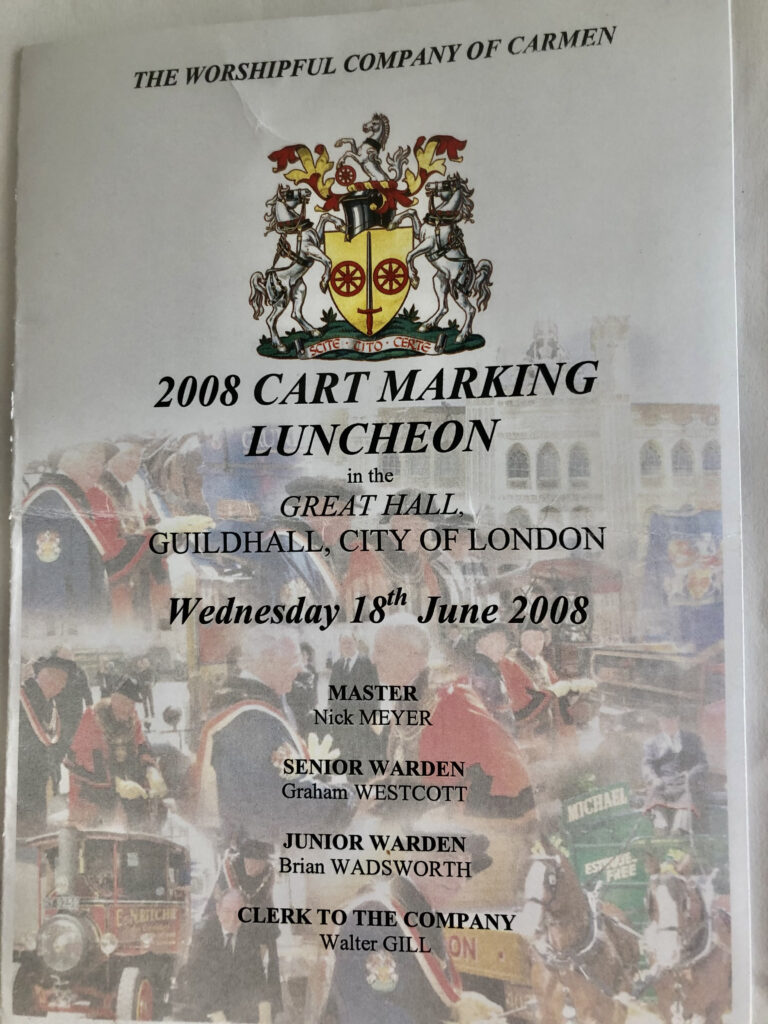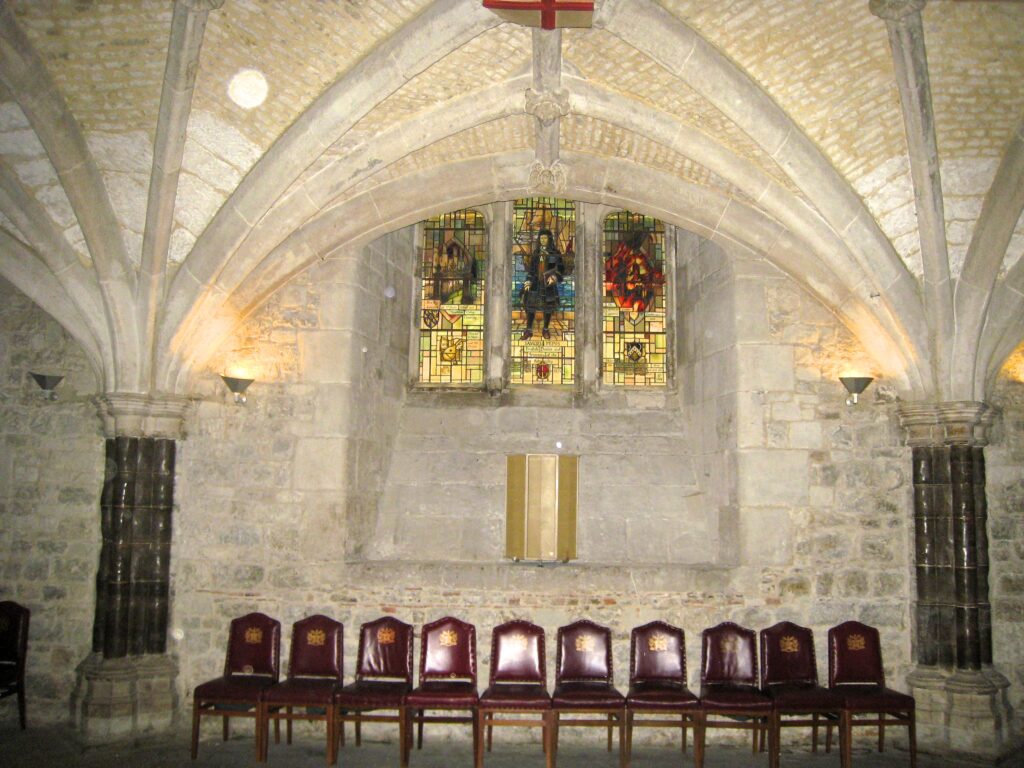What do Montgomery’s Rolls Royce and a butcher’s handcart have in common? On that day, they appeared in a London ritual dating back to 1667.
I admit that the first time I heard the name of the ceremony—Cart Marking Under the Worshipful Company of Carmen—I wondered who Carmen was. We now call them truck drivers.
Celebrating trades from the past is part of London’s culture and an interesting way to brush up on historic trivia. The Worshipful Company of Woolmen, for example, still recalls its historic right to bring sheep to market by driving them across the Thames, although not necessarily across the London Bridge anymore.
I am at Guildhall Yard, in the oldest part of London, known as the City. With some one hundred spectators, I am here for entertainment, but cart marking is linked to transportation, itself the backbone of commerce, and human mass movement.
Who Are the Carmen?
As London’s population grew, cartage became so costly trash was uncollected, and the streets were in dire need of help. In 1517, the carmen took the matter into their hands and started a fellowship to “clense, purge and kepe clene all the Stretes of… Donge…” for a reasonable price. They got licensed for the trade of plying for hire.
The Carmen Company is still a Guild of the City of London, and, as a Livery Company, members are entitled to a livery uniform. It’s also the oldest transport organization in the world.
Guilds of this kind existed all over Europe as a way to regulate their trade. Today, they retain their rights under the title “Worshipful Company of…” and the stewardship of the Guild of Freemen. Their mission is to “bring together free men and women for the purpose of charity, benevolence, education, and social interaction.”
What Is Cart Marking?
The licensing of vehicles was passed on to the Keeper of the Guildhall in 1838 but by 1965 the practice of “standing for hire” became incompatible with street traffic, and parking regulations. It was abolished, except for cart marking. Today, the symbolic marking is branded on a wooden plaque affixed to the side of a vintage or modern vehicle that belongs to members of the Company of Carmen.
Let the Branding Begin
A fanfare gets everyone’s attention as the Guildhall School of Music and Drama opens the march into the Guildhall Yard. One tradition calling for another, Master Glover presents gloves to Master Carman. The first vehicle then appears in a drive-through passage to the Yard.
It’s a 1938 Austin Taxi Cab, and the most recognizable symbol of London. It replaced horse-drawn carriages and was the first electrically powered vehicle, until the better-range gasoline-powered engine took over, in 1903.
Master Carman symbolically inspects the cab. Then, the Hall Keeper, in protective gloves, uses a red-hot iron to brand the letter for the year on a wooden plate—X for 2015.
A 1910 Dust Car 2 Horses precedes a 1935 Albion 5T Bakery Van: Lyon’s Swiss Rolls, bearing the Royal Warrant “By Appointment to his Majesty the King & H.R.R. the Prince of Wales,” and a distinction granted to trades supplying goods and services to the King and/or Queen, and to the Prince of Wales. At the time, the King was Queen Elizabeth’s father, George VI, and the Prince of Wales was Edward—who would abdicate as king in 1936.
Vehicles follow one another in ascending parade numbers, in no particular order of make, type, or year. The program shows a 1932 Ford A Type Woody, a 2008 Volvo FM440 Tractor Unit, and then an 1890 Landau 2 Horses.
Forty-five minutes into the ceremony, the fanfare announces the arrival of Lord Mayor and Lady Mayoress. In commendable British panache, Lord Mayor steps out of a car in a red cape outlined with mink, a black plumed hat, and the mayoral gold collar. It’s his turn to share in the marking duty.
The eclectic parade continues with a c1920 Bumaree’s Handcart loaded with a fake meat quarter, a 2008 Vetrix Eco Scooter, and a glossy 1920 Fowler Road Locomotive.
A clattering of hooves then precedes a carriage pulled by four horses. Let’s imagine the scene of the first meat mass supply by land transportation: a pack of up to 60 horses and the lead horse fitted with a warning bell.
The ensuing dung-clearing crew parades just as well—and just in time for an upcoming Rolls-Royce.
The model is listed as a 1938 Wraith Staff Car. My history-fanatic husband immediately recognizes Field Marshall Montgomery’s Phantom III Rolls Royce. How does he know? “It has five stars,” he says, “He was the only British General with such a status.” I notice the five red stars as an announcement acknowledges “Monty’s” car—and his very-elderly chauffeur as the passenger.
Lunch at the Great Hall
The ceremony ends inside the Great Hall, where dignitaries have entertained state visitors for centuries. It’s also the venue for the meetings of the City of London, and private functions such as the ensuing Cart Marking charity lunch. An invitation by a member of the Worshipful Company of Carmen is an opportunity to see the Great Hall and learn a bit of history.
The original Guildhall Yard was built in the 15-th century, on top of an amphitheater dating back to Roman times. It has been reconstructed after the London fires and the Second World War. Such imposing buildings reflected the importance of the ruling elite. The original word gild—meaning payment—suggests it’s where people paid their taxes. It also houses a library and an art gallery.
Imposing columns and arches support the ceiling. Massive chandeliers gleam on the statues of national heroes such as Sir Winston Churchill. In the crypt, stained-glass windows enliven the medieval architecture animated by the colorful shields of London’s 12 principal liveries.
It’s now time for Master Carman to welcome the Queen and other royals… as if they were in attendance. “Scite, Cite, Certo” is the Company of Carmen’s motto: “Skillfully, Swiftly, Surely.” And so, it remains.
First published 2013 Buckettripper.com


